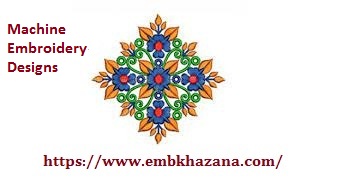What Factors to Consider When Machine Embroidery Designs

Machine embroidery is a creative and rewarding craft that allows you to create beautiful designs on fabric. It is important to take into consideration a variety of factors when creating your machine embroidery designs to ensure you produce the best results possible.
Types of Fabric
The type of fabric you choose for your machine embroidery designs can have a significant impact on the final product. Different fabrics will require different stabilizers and threads, as well as different settings on the embroidery machine. Some of the most popular fabrics used in machine embroidery are cotton, linen, and polyester. It is important to consider the type of fabric you are using when selecting the best stabilizers and threads for your design.
Types of Stabilizers
Stabilizers are a crucial element of machine embroidery, and choosing the right stabilizer for your project can make a big difference in the final product. There are many different types of stabilizers, including cut–away, tear–away, and water–soluble stabilizers. Each type of stabilizer has its own advantages and disadvantages, and it is important to consider the type of fabric you are using when selecting a stabilizer.
Threads
Threads are an essential part of machine embroidery, and it is important to select the right type of thread for your project. Different fabrics will require different types of threads, such as rayon, polyester, or cotton. It is important to consider the type of fabric you are using when selecting the right thread for your machine embroidery designs. Different threads will also require different settings on the embroidery machine, so it is important to read the instructions carefully before beginning your project.
What is the best speed for embroidery machine?
The best speed for an embroidery machine depends on a variety of factors, including the type and quality of the fabric being embroidered, the complexity of the design, and the size of the design. For most embroidery projects, a speed of around 750 to 1000 stitches per minute is recommended. However, if the fabric is thicker or the design is more complex, a slower speed may be necessary to ensure that the stitching is of high quality.
When selecting the best speed for an embroidery machine, it is important to consider the type of fabric being used. Lightweight fabrics, such as chiffon, are best embroidered at a speed of around 500 to 800 stitches per minute.Medium-weight fabrics (such as denim or canvas) require a slightly faster speed of around 800 to 1000 stitches per minute. Heavy-weight fabrics, such as leather or upholstery fabric, should be embroidered at a speed of 1000 to 1500 stitches per minute.
The complexity of the design also affects the best speed for an embroidery machine. A simpler design with fewer colors can be embroidered at a higher speed, while a more complex design with many colors and intricate details should be sewn at a slower speed. This will help ensure that the stitching is even and the design is clear.
Finally, the size of the design also affects the best speed for an embroidery machine. Larger designs with more detail should be embroidered at a lower speed, while smaller designs can be embroidered at a higher speed.
In general, the best speed for an embroidery machine is between 750 and 1000 stitches per minute. However, the type of fabric being used, the complexity of the design, and the size of the design should all be taken into consideration when selecting the best speed for your project. By taking the time to select the best speed for the embroidery machine, you can ensure that your project comes out looking professional and beautiful.